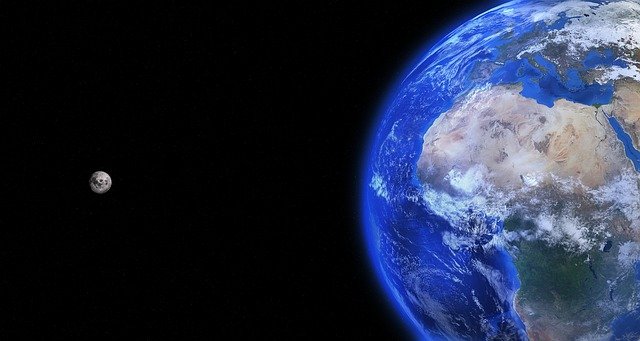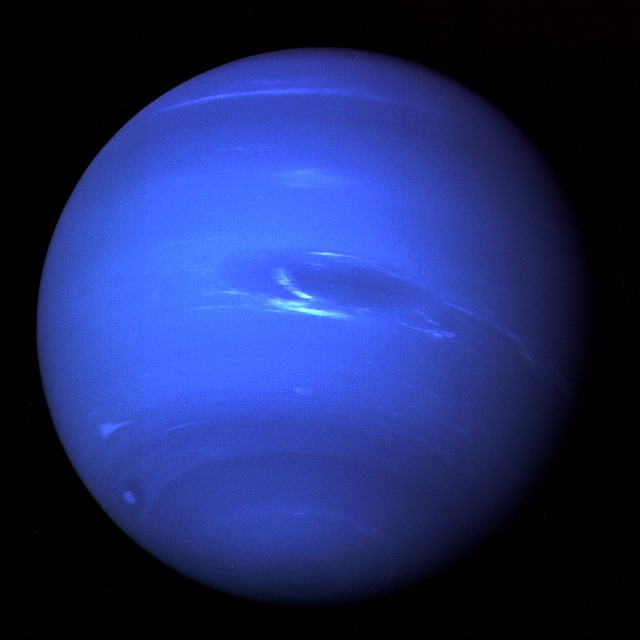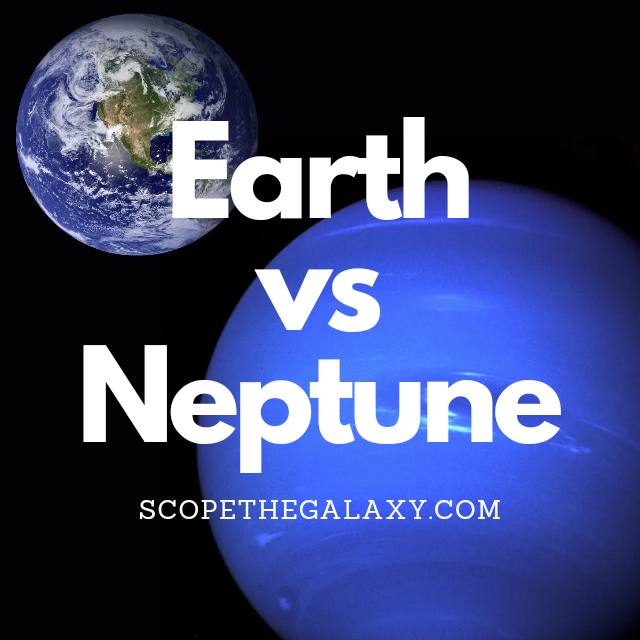*This post may contain affiliate links. This means we may make a commission if you purchase an item using one of our links*
The main differences between Earth and Neptune is that Earth is a terrestrial planet that is able to harbor life whilst Neptune is a gas based ice giant that is unlikely to harbor life. Earth has 1 moon whilst Neptune has 14, Neptune is just under 4 times bigger in terms of diameter, Neptune has the fastest winds in our solar system at 2,000 km/h and is the 8th farthest planet from the Sun whilst Earth is 3rd.
There are a variety of other differences between the two so continue reading if you want a more thorough breakdown of what these differences are below.
What Is The Planet Earth?
Table of Contents

Our home planet Earth is the 3rd farthest planet from the Sun, made up of a mixture of water and solid rock like objects, and is the only entity in our solar system known to allow intelligent life forms like ourselves to exist.
Earth’s distance of 152 million km from the Sun has allowed it to remain within the goldilocks zone and as a result, the planet has been able to thrive for millions of years. It orbits the Sun in a circular pattern, much like all the other planets, has only one natural satellite which would be the Moon and is a terrestrial planet to boot.
In regards to its diameter, Earth is the 5th largest planet with a diameter 12,742km.
Earth’s temperature ranges based on the region you’re located where it can be from as low as -94 degrees Celsius in Antarctica to as high as 50 – 55 degrees Celsius in Tunisia.
As for the planets composition, it consists of the crust, the mantle, the outer core and the inner core, where the inner core is the hottest element within the Earth reaching temperature in excess of 5,200 degrees Celsius.
In regards to some of its most unique features, Earth is around 71% water, has an atmosphere consisting mostly of oxygen and nitrogen that is also made up of 5 main layers, with the highest to lowest being the troposphere, stratosphere, mesosphere, thermosphere and exosphere.
A day on Earth is 24 hours and an orbital cycle around the Sun takes 365 days to complete. It’s axial tilt is more distinct at 23.5 degrees to the right.
What Is The Planet Neptune?

Neptune is the 8th farthest planet from the Sun and ranks among the bigger planets in our solar system. As the 8th farthest planet from the Sun, it does take Neptune a very long time to complete 1 orbital around the Sun.
This takes 165 years to complete which in comparison to the 16 hour 1 full spin around the axis is a massive difference.
In regards to its composition, Neptune is mostly made up of a thick swath of water closer to the center, methane, ammonia, hydrogen and helium molded around its Earth sized core.
As a result of the excess amount of methane and the inclusion of another undiscovered element within the atmosphere, Neptune’s color is a far deeper blue than the likes Uranus, which also has an abundantly methane based atmosphere.
The planet is 49,244km in diameter, making it roughly 4 times Earth’s diameter Earth, and would allow around 57 Earths to fit inside it. This also makes Neptune the 4th largest planet in our solar system.
Neptune is very cold mostly down to its distance from the Sun, where its atmospheric temperature sits between-220 to -230 degrees Celsius. Its core is far hotter coming in at 5,100 degrees Celsius and is the very likely cause for the liquid water present within the planet
Subsequently, the erratic temperature and gaseous composition of Neptune, is what constitute towards its turbulent behavior.
In fact Neptune has the fasted winds in our solar system, producing some that eclipse speeds of 2,000km per hour. The fastest winds on Earth would only be a fifth of these speeds at most.
At this moment in time we have discovered 14 moons orbiting Neptune and have also observed 5 thinner rings surrounding the ice giant.
Similarities Between Earth And Neptune
Earth and Neptune don’t share too many common features but there are the odd few features they do share, which includes the below:
- Both planets orbit the Sun in a circular pattern
- Both have a hotter central core.
- Both are a spherical shape.
- Both have multiple moons orbiting them.
Differences Between Earth And Neptune
As for the differences between Earth and Neptune, they include the following:
- Earth is a terrestrial planet whilst Neptune is a gas based ice giant.
- Earth is more dense where it is 5.51 g/cm³ whereas Neptune’s density is 1.64 g/cm³.
- Neptune has 14 moons whilst Earth has 1.
- Neptune’s diameter is 49,244km whereas Earth is 12,742km.
- Earth is the warmer of the two with an average temperature of 13.9 degrees Celsius whereas Neptune’s temperature is -220 to -230 degrees Celsius.
- Earth’s core is 5,200 degrees Celsius whilst Neptune’s core temperature is 5,100 degrees Celsius.
- Neptune’s magnetic strength is 27 times stronger than Earth’s.
- Earth’s gravity is 9.807 m/s² whilst Neptune’s gravitational strength is 11.15 m/s².
- Neptune has the fastest winds in our solar system where it is 2,000 km/h whilst the fastest winds on Earth are far slower at 407 km/h.
- Earth is blue and green in color whilst Neptune is a deep blue color.
- A day in Earth is 24 hours whilst a day on Neptune is 16 hours.
- It takes Neptune 165 years to orbit the Sun whilst Earth takes 1 year to do the same, which is equivalent to 365 days.
- Earth has an axial tilt of 23.5 degrees which is less that Neptune’s 28 degrees.
- Neptune has a mass of 1.024 × 10^26 kg whilst the Earth’s mass is 5.972 × 10^24 kg.
Summary
Earth and Neptune are very different from each other despite the fact both orbit the same Sun and are part of the same solar system.
Whether it be their differences in size, temperature, density, gravity, wind speeds and more really does show how distinct both Earth and Neptune are from one another.

